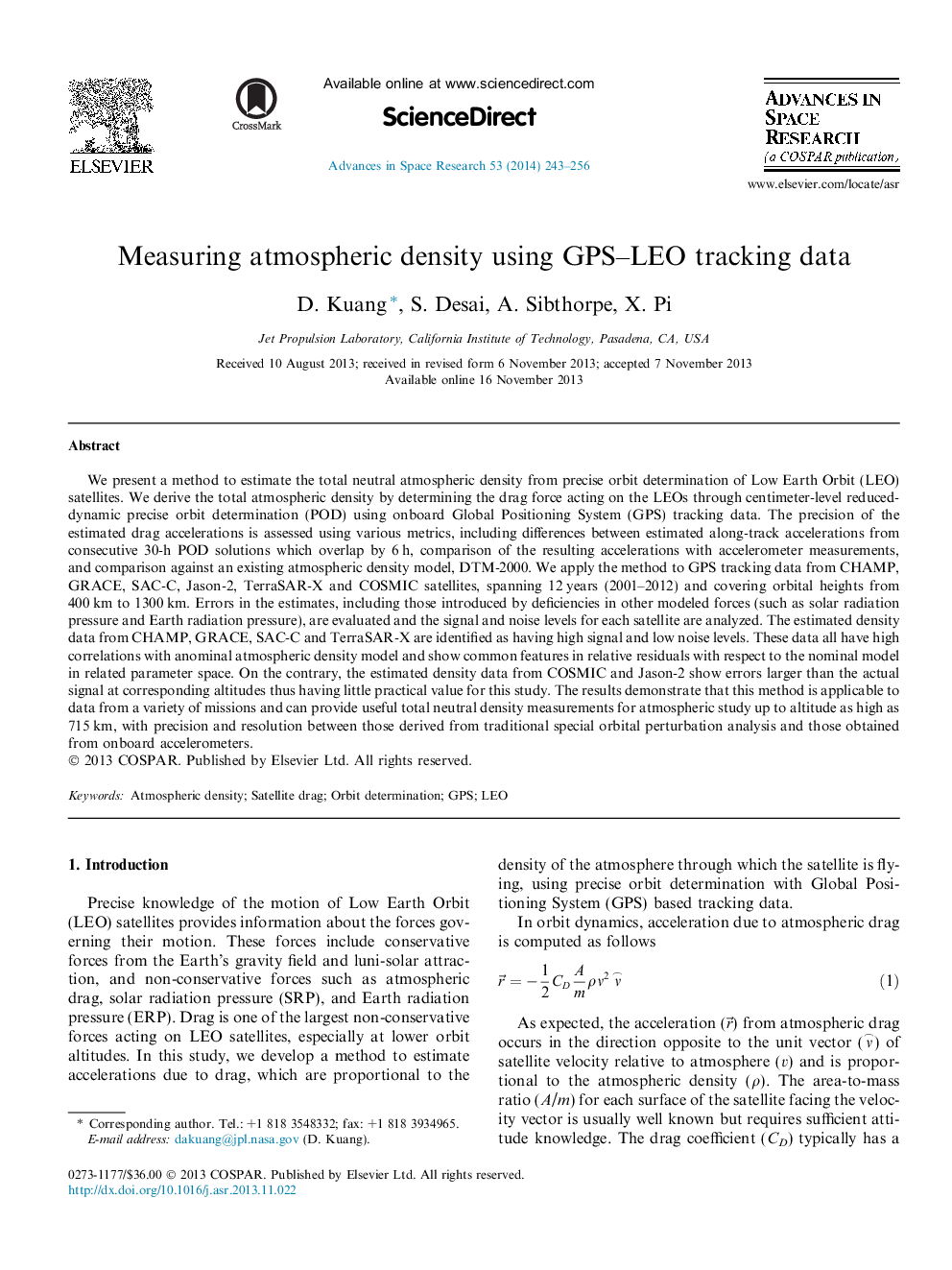| کد مقاله | کد نشریه | سال انتشار | مقاله انگلیسی | نسخه تمام متن |
|---|---|---|---|---|
| 1764281 | 1020049 | 2014 | 14 صفحه PDF | دانلود رایگان |
عنوان انگلیسی مقاله ISI
Measuring atmospheric density using GPS-LEO tracking data
دانلود مقاله + سفارش ترجمه
دانلود مقاله ISI انگلیسی
رایگان برای ایرانیان
کلمات کلیدی
موضوعات مرتبط
مهندسی و علوم پایه
علوم زمین و سیارات
علوم فضا و نجوم
پیش نمایش صفحه اول مقاله

چکیده انگلیسی
We present a method to estimate the total neutral atmospheric density from precise orbit determination of Low Earth Orbit (LEO) satellites. We derive the total atmospheric density by determining the drag force acting on the LEOs through centimeter-level reduced-dynamic precise orbit determination (POD) using onboard Global Positioning System (GPS) tracking data. The precision of the estimated drag accelerations is assessed using various metrics, including differences between estimated along-track accelerations from consecutive 30-h POD solutions which overlap by 6Â h, comparison of the resulting accelerations with accelerometer measurements, and comparison against an existing atmospheric density model, DTM-2000. We apply the method to GPS tracking data from CHAMP, GRACE, SAC-C, Jason-2, TerraSAR-X and COSMIC satellites, spanning 12Â years (2001-2012) and covering orbital heights from 400Â km to 1300Â km. Errors in the estimates, including those introduced by deficiencies in other modeled forces (such as solar radiation pressure and Earth radiation pressure), are evaluated and the signal and noise levels for each satellite are analyzed. The estimated density data from CHAMP, GRACE, SAC-C and TerraSAR-X are identified as having high signal and low noise levels. These data all have high correlations with anominal atmospheric density model and show common features in relative residuals with respect to the nominal model in related parameter space. On the contrary, the estimated density data from COSMIC and Jason-2 show errors larger than the actual signal at corresponding altitudes thus having little practical value for this study. The results demonstrate that this method is applicable to data from a variety of missions and can provide useful total neutral density measurements for atmospheric study up to altitude as high as 715Â km, with precision and resolution between those derived from traditional special orbital perturbation analysis and those obtained from onboard accelerometers.
ناشر
Database: Elsevier - ScienceDirect (ساینس دایرکت)
Journal: Advances in Space Research - Volume 53, Issue 2, 15 January 2014, Pages 243-256
Journal: Advances in Space Research - Volume 53, Issue 2, 15 January 2014, Pages 243-256
نویسندگان
D. Kuang, S. Desai, A. Sibthorpe, X. Pi,